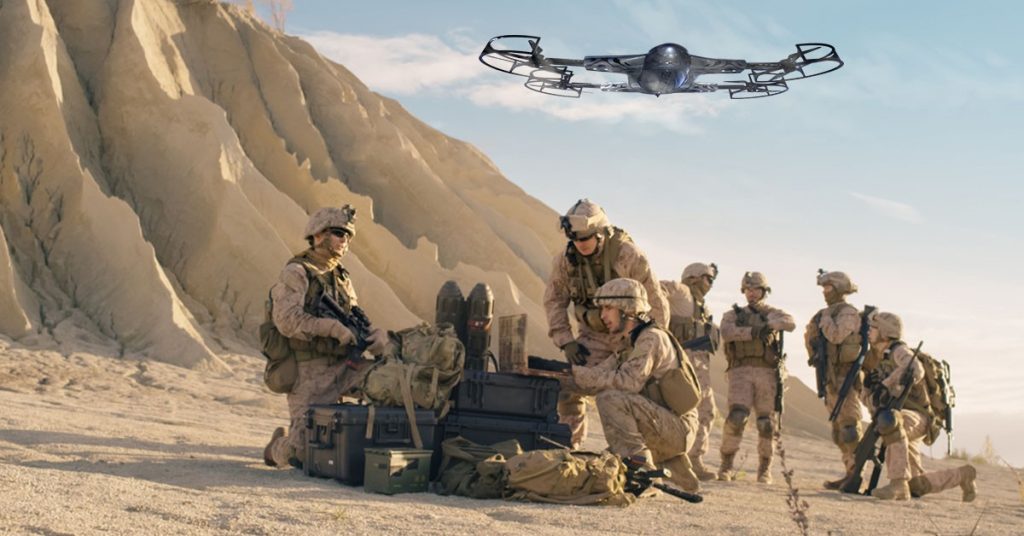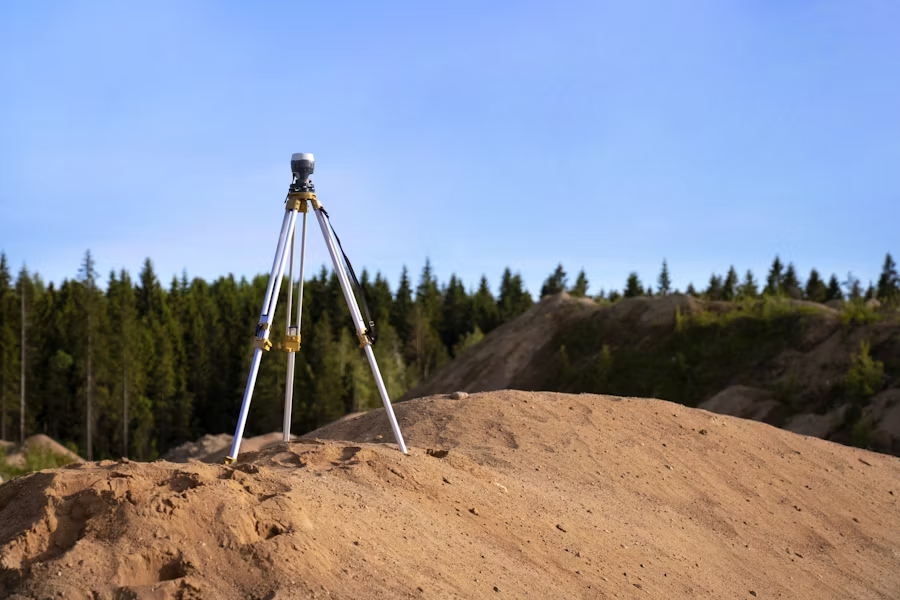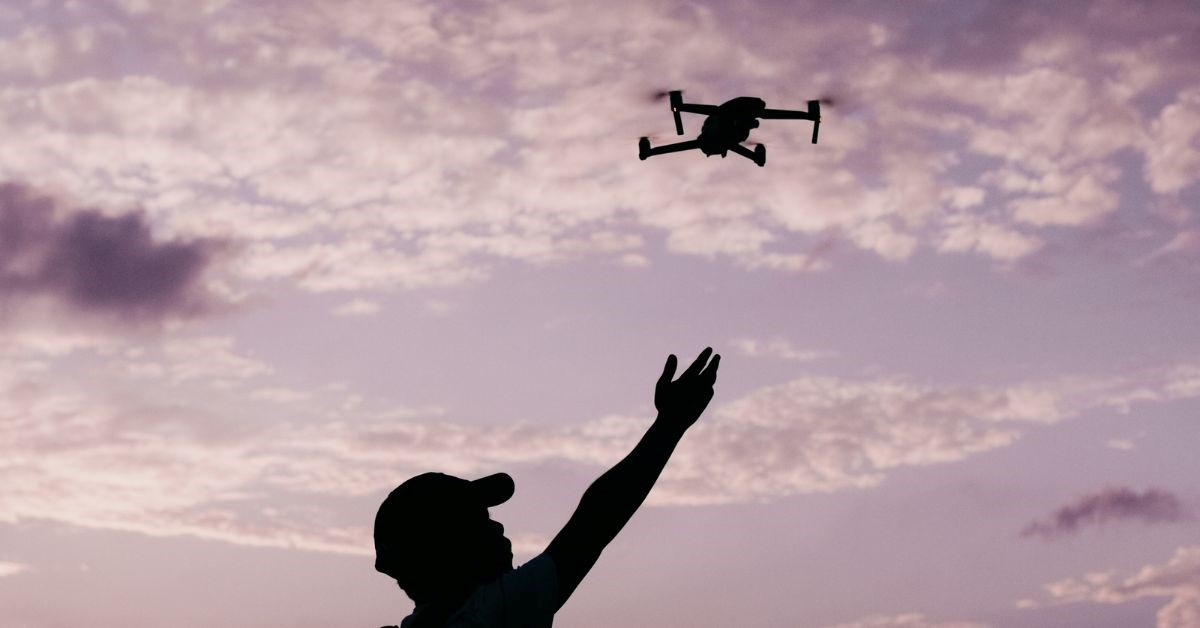The Impact of Drones on Future of Military Warfare

Unmanned aerial vehicles (UAVs) or commonly known as “drones”, are remotely controlled devices used in many industries, like Defense, Military Warfare and in many other. They are popular in public and private sectors because of their utility and growing affordability. The aerospace and defense industry initially made drones for counterinsurgency and defense, which have proven helpful in these environments.
Today, drones primarily serve the defense industry around the world. They help for a wide range of purposes, from target decoys to research and development. Additionally, they can be equipped with software to increase accuracy and reduce casualties.
What are the Types of Military Warfare?
Drones success in different operations makes them an invaluable asset. Aside from being a crucial part of militaries, they can deploy different types of drones for specific missions. There are a few different types of drones used in militaries around the world:
- Fixed-wing: The fixed-wing drone is the fastest military UAV currently deployed worldwide. These drones are designed to take off and land like aero planes, using wings instead of rotors for lift.
- Single-rotor: Single-rotor drones look similar to helicopters and are more durable than other drones. While they can be more efficient than different types of drones, they require more maintenance.
- Multirotor: Multirotor drones are the most straightforward option that provides the best control over positioning and framing. Because of this, they are the best choice for surveillance and reconnaissance.
How are Drones Changing Military Warfare?
Since its first introduction to the military-industrial complex, drones have significantly changed defense and counterinsurgency operations. While the concept of an unmanned ground or aerial vehicle isn’t new, it certainly provides enormous advantages. Drones have improved military capabilities around the world in many ways. It will also continue to change military warfare through the following:
1. Better Reconnaissance, Surveillance, and Target Acquisition (RSTA)
Drones provide real-time information on targets’ positions, terrain, and enemy movements to commanders on the ground. Compared to high-altitude aircraft, drones can take closer footage without compromising the quality of both photos and video.
2. Reduced Cost
Drones are cheaper than conventional aircraft in terms of both price and maintenance. Because drones are unmanned, they also reduce the risk of pilots being injured mid-flight.
3. Increased Convenience
Compared to conventional aircraft, drones are faster and easier to deploy. They are easier to operate and don’t need training as extensive as most aircraft. Also, many drones don’t need a runway, and other types can easily fit in a backpack.
4. Increased Safety
Drone operators can provide real-time information without putting themselves at risk. On top of this, that same information also informs commanders where to position their troops to ensure safety.
5. Increased Flexibility
Military forces must always be ready for anything at a moment’s notice. While the military-industrial complex has developed technology that prioritizes this need, drones are the best example. On top of this, drones can even be fully automated. Today, many Military Warfare industries develop drone technology integrated into more military programs worldwide. They provide many benefits and advantages that make them extremely useful for different roles.
As a result, more military forces are looking to use drones to increase their combat and surveillance capacity. These are the most common roles UAVs fulfil:
- Reconnaissance: Drones can conduct surveillance missions by hovering over an area for an extended period.
- Command and Control: Drones can relay crucial information on enemy movements, locations, and positions of strategic targets. This information allows commanders to be more efficient and make better decisions when in the field.
- Combat and Combat Support: Unmanned vehicles play a huge role in performing combat and combat support missions. Built-in targeting software allows operators to hit their targets with greater precision and accuracy.
- Target Practice: UAVs can be used for target practice or for training exercises by operators to improve their accuracy. Drones’ built-in targeting software is customizable to detect and respond to targets automatically.
- Logistics: Drones can be used as military-industrial couriers and assist in delivering valuable supplies and equipment. They can also help evacuate injured personnel.
What’s next for Military Warfare?
Since its initial development by the military-industrial complex in Cold War times, drones have come a long way. Unmanned aerial vehicles are increasingly common, seeing more applications outside of combat. In civilian and commercial applications, their functions will only become more sophisticated. Here are some of the things they can already do:
- Fully Autonomous Flights: Surveying and monitoring large areas can be difficult using traditional means. However, drones with pre-programmed flight paths can turn this into a hands-free routine.
- Highly-Detailed 3D Mapping: Built-in AI and integrated software can help in various functions, from search and rescue to 3D mapping. The processed data can even be sent and shared in real-time.
- Geotagging and Thermal Detection: Drones are surprisingly useful in the agriculture industry since they can tag, monitor, and predict plant health.
ZenaDrone is one such drone that has these capabilities and more. It combines the best of both software and hardware to provide solutions for aerial monitoring and data gathering. The result is a valuable asset capable of fulfilling needs in various industries.
Contact Us
Thank you for your message. It has been sent.
Latest Posts
Social Profiles















